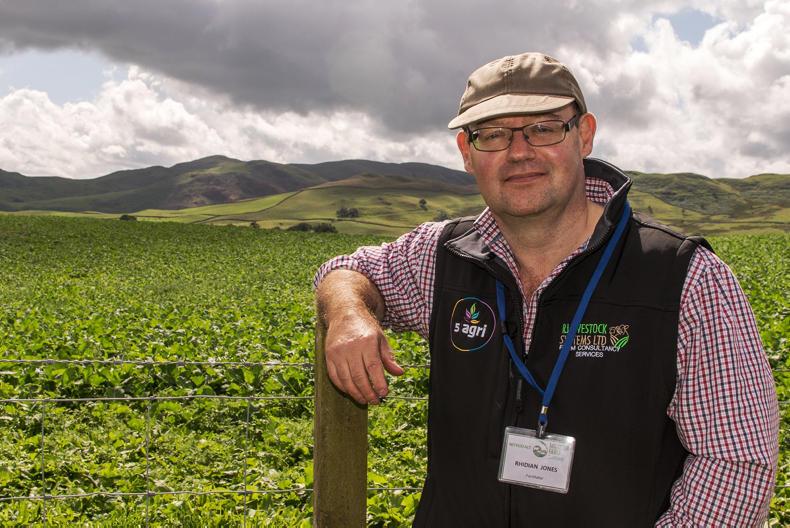Fodder shortage: “The current dry spell we are experiencing is unprecedented in recent years and follows a late spring where silage stocks were used up and more concentrate feeding was required. It is inevitable that it will be a costly year for livestock farmers, but there are some basic steps that can be taken to alleviate the situation. The key is for farmers to do these things now and not wait until they are forced into actions when they have no choice.”
Feed budget: The advice on the day from Rhidian was to establish a feed budget as a first step to work out what feeds are available and how much livestock can be carried on that feed. Stitching in some Italian Ryegrass with/without forage rape or stubble turnips to some fields will provide a supply of feed in the autumn, early winter and an early bite for the spring. Italian ryegrass will last 12-18 months and should give a silage crop next year as well.Applying nitrogen in small quantities (20-30kgN/ha) where there may be heavy dew in the mornings or rain forecast will also help boost grass growth.
Wean lambs: “Consider weaning lambs once they are 12 weeks of age. From eight weeks they will be deriving more nutrition from grass than milk and will be directly competing with ewes for valuable grass. The ewes’ DM requirements will be more than halved and they can be dried off on very little grass.
Another option was to sell cull ewes earlier to reduce demand on grazing. Similarly he recommended scanning cows and selling any barren cows at the earliest opportunities.
“Creep feeding calves earlier will boost calf growth rates and help to take the pressure off the cows and grassland. This may also help conception rates of the cows depending on when the bulls are put in.”
Future of the business: “This may also be an opportune time to have a more strategic look at your farm business in terms of stocking density, enterprise mix, wintering options, resilience to cope with extreme conditions and whether investment is required for future sustainability.”






 This is a subscriber-only article
This is a subscriber-only article










SHARING OPTIONS: